Backpacking with a pistol can be an incredibly rewarding experience, allowing you to get up close and personal with nature while getting some exercise. However, there are also inherent risks associated with being out on the trail.
Contents
That’s where backpacking with a pistol comes in. Carrying a firearm while backpacking can provide added protection and peace of mind in certain situations.
But before you hit the trail, it’s important to be knowledgeable about the legal aspects, safety considerations, and proper packing techniques involved in carrying a pistol while backpacking.
Key Takeaways:
- Backpacking with a pistol can provide added protection and peace of mind on the trail.
- Understanding the legal aspects of carrying a firearm while backpacking is crucial.
- Safety should always be a top priority when carrying a pistol while backpacking.
- Choosing the right pistol and packing techniques are essential for convenience and safety.
- Alternative options, such as bear spray, can be effective in certain backpacking scenarios.
The Benefits of Carrying a Pistol While Backpacking
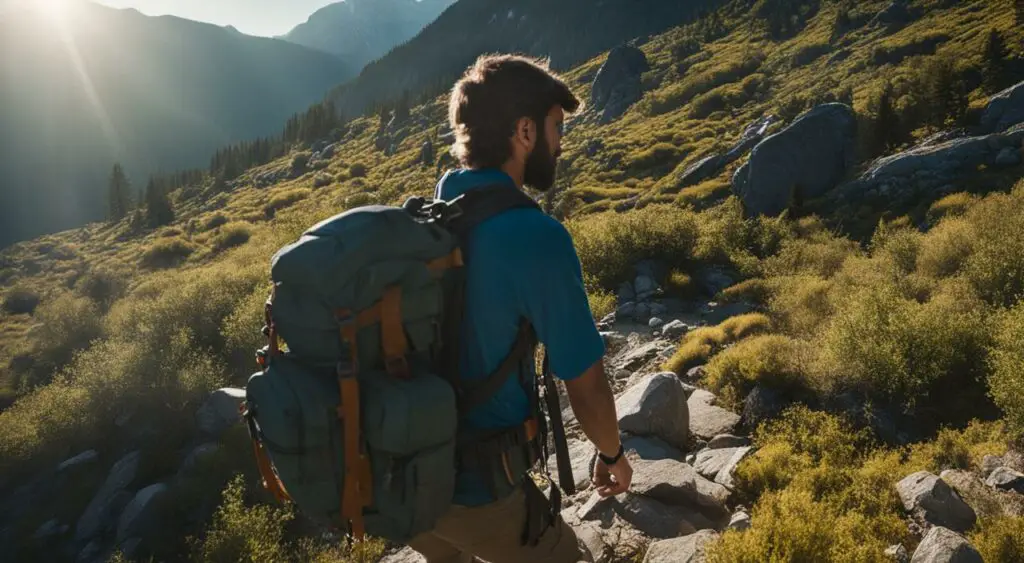
When you are backpacking, you want to feel safe and secure. That’s why many people choose to carry a pistol while hiking on the trail.
It provides an added layer of protection and peace of mind. In this section, we’ll explore the benefits of carrying a pistol while backpacking, as well as some important considerations.
Carry
Carrying a pistol while backpacking allows you to defend yourself in case of an attack from animals or humans.
While bears and mountain lions may not frequently attack humans, it is still a possibility when you’re in the wilderness.
Similarly, there is always a risk of encountering dangerous people in remote areas, and having a firearm can give you an advantage in a self-defense situation.
Gun
A pistol is a compact and lightweight option for a backpacking gun. It doesn’t take up much space in your pack, and it is easy to carry on your person.
Additionally, pistols are relatively easy to shoot accurately, making them an effective self-defense tool in the hands of a trained user.
Gear
When backpacking, you need to be mindful of what gear you bring with you.
A pistol can be an essential piece of gear, but you need to ensure that you are properly equipped to carry it.
This may mean investing in a high-quality holster or a specialized backpack designed to hold a firearm.
Hiking
While hiking, you may encounter a variety of situations where a pistol could come in handy.
For example, if you encounter a predator like a bear or a wolf, having a firearm could be the difference between life and death.
Similarly, if you are approached by a suspicious person on the trail, a pistol can be a valuable tool for self-defense.
It’s important to note that while a pistol can provide added protection, it is not a guarantee of safety.
You should always be aware of your surroundings, avoid risky situations whenever possible, and take appropriate precautions to stay safe.
In the next section, we will dive deeper into the legal aspects of backpacking with a pistol.
It’s important to know the rules and regulations surrounding firearms in different areas before you set foot on the trail.
Understanding the Legal Aspects of Backpacking with a Pistol
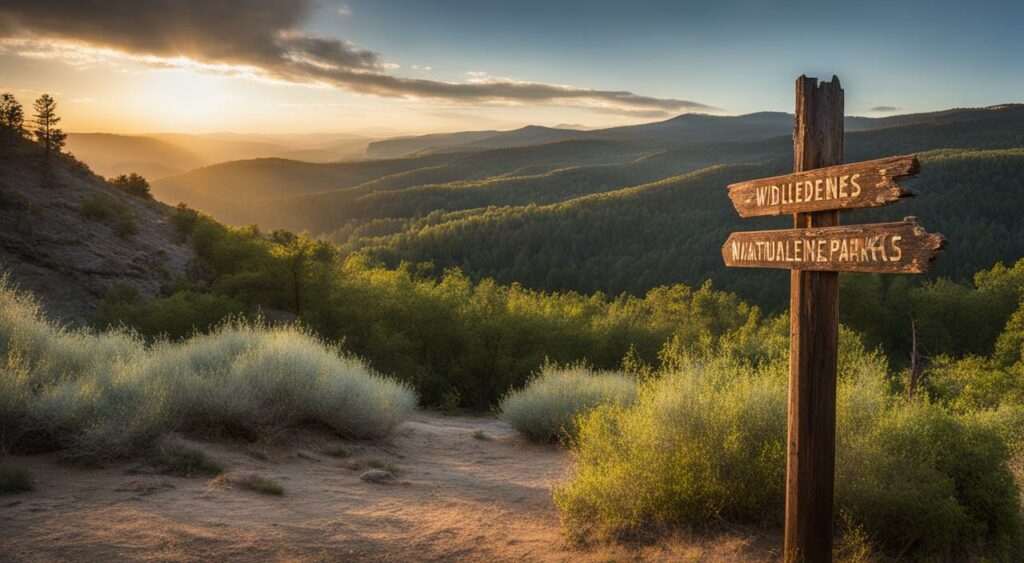
Before hitting the trail with a firearm, it is important to understand the legal aspects of backpacking with a pistol.
Firearms regulations vary from state to state and national park to national park, so it is important to do your research ahead of time.
Firearms Regulations in National Parks
If you plan on backpacking in a national park, it’s crucial to be aware of the specific regulations surrounding firearms.
In general, firearms are allowed in national parks but must be unloaded and properly stored when not in use.
However, some national parks have stricter regulations, such as Yellowstone National Park where firearms must be permitted by a park ranger and can only be carried in certain areas.
It’s important to note that state laws also apply within national parks, so be sure to research the specific regulations of the state you will be backpacking in as well as the national park itself.
Firearms Regulations on the Appalachian Trail
The Appalachian Trail runs through 14 states, each with their own regulations regarding firearms.
In general, firearms are legal to carry on the trail as long as they are legal in the state you are in and properly stored when not in use.
However, some areas, such as the Great Smoky Mountains National Park, have stricter regulations regarding firearms and require individuals to have a permit.
Concealed Carry Permits
If you have a concealed carry permit, it is important to research the laws of the specific state you will be backpacking in.
Some states have reciprocity agreements with other states, meaning your permit will be valid in that state, while others do not.
Additionally, some states have specific regulations regarding where and how a concealed weapon can be carried.
Transporting Your Firearm
When transporting your firearm to a backpacking trip, it is important to follow all federal and state laws.
Firearms must be unloaded and properly stored in a locked container during transport.
Additionally, ammunition should be stored separately from the firearm to prevent accidental discharge.
Legal Consequences
It’s important to understand the legal consequences of violating firearms regulations.
Depending on the severity of the violation, consequences can range from fines to imprisonment. It’s important to prioritize safety and legality when backpacking with a pistol.
Safety Tips for Backpacking with a Pistol
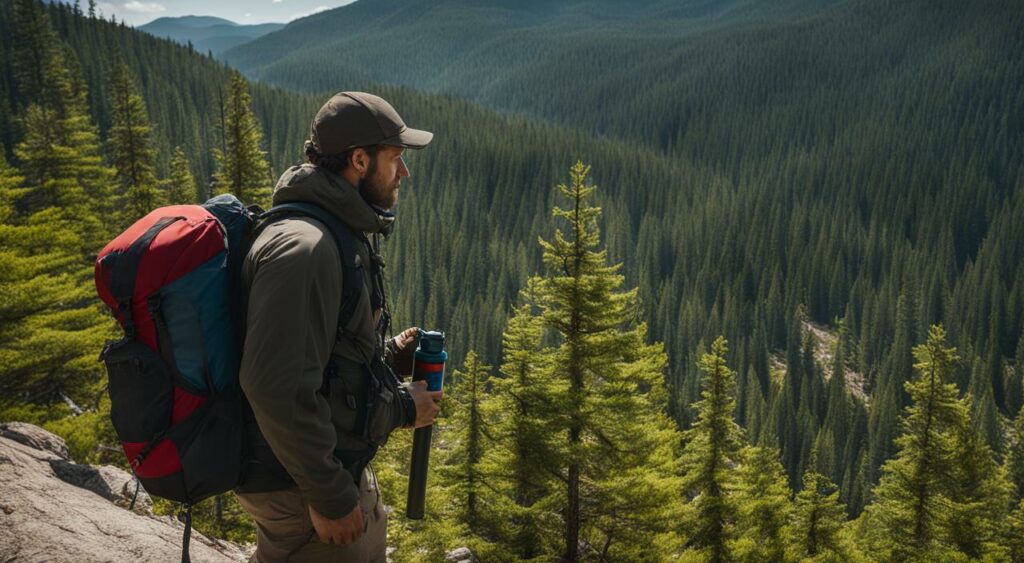
Backpacking with a pistol can provide added security, but it’s essential to prioritize safety during your trip. Here are some tips to ensure responsible and safe firearm use while on the trail:
Proper Handling and Storage
Always handle your pistol with care and make sure it is stored safely.
When packing and unpacking your gear, be sure to keep your pistol unloaded and always point it in a safe direction.
When not in use, keep your pistol stored in a secure location, such as a locked case or holster.
Bear Spray as an Alternative
Bear spray is a highly effective alternative to pistols for deterring wildlife. It is lightweight, easy to use, and does not require special permits or training.
If you choose to carry bear spray, practice using it before your trip and make sure it is easily accessible in case of an emergency.
Concealed Carry Considerations
If you choose to carry a concealed pistol, make sure you have the proper permits and training required by the state and federal laws.
It’s also important to remember that some states have restrictions on where you can carry a concealed firearm, even with a permit.
Do your research ahead of time to avoid any legal issues.
Practice Firearm Safety
Handling a firearm while backpacking requires extra precautions.
Always keep your finger off the trigger until ready to shoot, and never point your pistol at anything you do not intend to shoot.
Additionally, be aware of your surroundings and make sure you have a clear and safe shot before firing.
Know Your Limits
Backpacking with a pistol requires physical and mental preparedness. If you are new to backpacking or not comfortable with handling firearms.
Consider taking a training course or going on a trip with an experienced backpacker who can provide guidance and support.
Choosing the Right Pistol for Backpacking
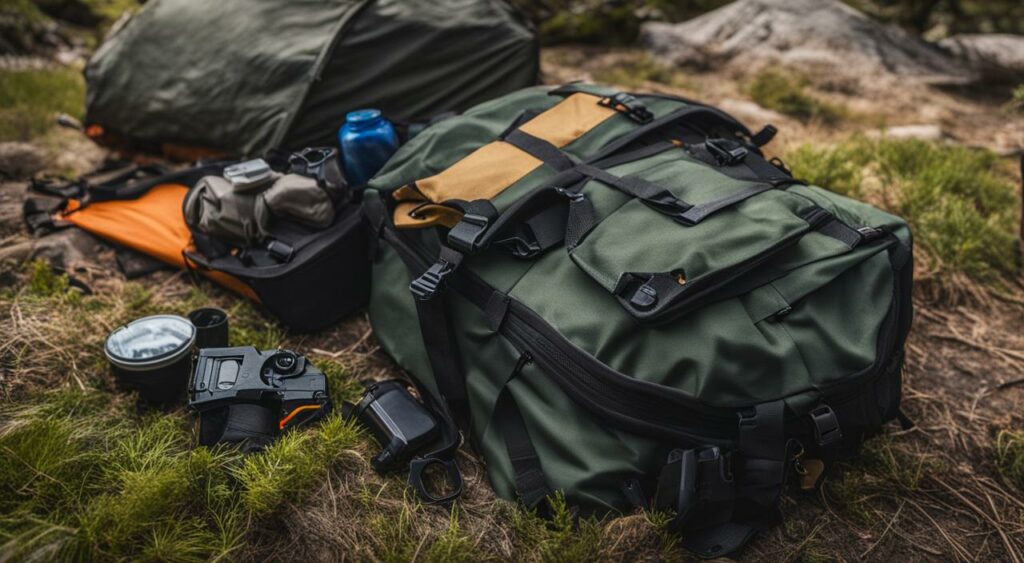
When selecting a pistol for backpacking, there are a few factors to consider to ensure you have the ideal backpacking gun for your needs.
Weight
The weight of your pistol is an essential consideration when backpacking, as it can add extra pounds to your gear. Look for lightweight options that are still durable and reliable.
The Glock 20 is a popular choice for backpacking, weighing in at just over 30 ounces without ammunition.
Caliber
The caliber of your pistol is another crucial factor to consider when backpacking. A higher caliber can provide more stopping power, but it also comes with increased recoil and weight.
Consider a caliber between 9mm and .45 ACP, as they are suitable for self-defense and hunting small game if necessary.
Reliability
Reliability is key when selecting a pistol for backpacking, as you want a firearm that will function correctly in any situation.
Look for models with a solid reputation for reliability and durability, such as the Glock 20.
Remember to practice shooting and handling your chosen pistol before taking it on a backpacking trip to ensure you are comfortable and proficient with its use.
| Pistol | Weight (unloaded) | Caliber | Reliability |
|---|---|---|---|
| Glock 20 | 31 oz | 10mm | Very reliable |
| Smith & Wesson M&P9 Shield | 19 oz | 9mm | Very reliable |
| Springfield Armory XD(M) | 29 oz | .45 ACP | Very reliable |
Choosing the right pistol for backpacking can enhance your safety and overall experience on the trail.
Packing and Carrying Your Pistol on a Backpacking Trip
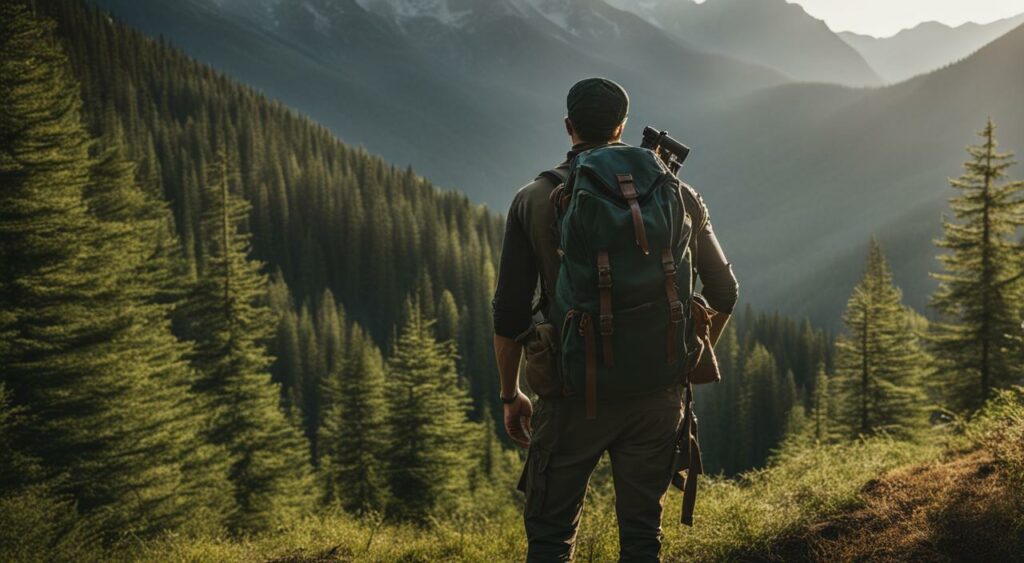
When backpacking with a pistol, proper packing and carrying techniques are crucial to ensure convenience, accessibility, and safety.
Here are some tips to help you pack and carry your firearm securely on the trail:
- Choose the right holster: Your holster should be comfortable, fit your pistol securely, and be easily accessed when needed.Consider a holster with adjustable retention and a sweat guard for added comfort.
- Select the appropriate clothing: Your clothing should provide easy access to your pistol while also keeping it concealed.Clothing that is too tight or too loose can interfere with your holster and make it difficult to quickly draw your pistol.
- Practice proper handling techniques: Always ensure your pistol is unloaded when packing and handling it. Additionally, keep your finger off the trigger until you’re ready to use it.
- Store your pistol in a secure location: Whether you’re carrying your pistol on your person or in your backpack, make sure it’s stored in a secure location where it won’t accidentally discharge or fall out of your pack.
- Regularly check your pistol: Before and during your backpacking trip, regularly check your pistol to ensure it’s functioning properly and hasn’t suffered any damage during transport.
Overall, the ideal backpacking gun is one that is lightweight, reliable, and easily accessible. The Glock 20 is a popular choice for backpacking because of its lightweight and large magazine capacity.
When packing your pistol, ensure it’s in a waterproof case or bag to protect it from the elements.
Pro Tip: Prior to your backpacking trip, practice drawing and re-holstering your pistol to ensure you’re comfortable and confident in your handling techniques.
Essential Gear Checklist for Backpacking with a Pistol
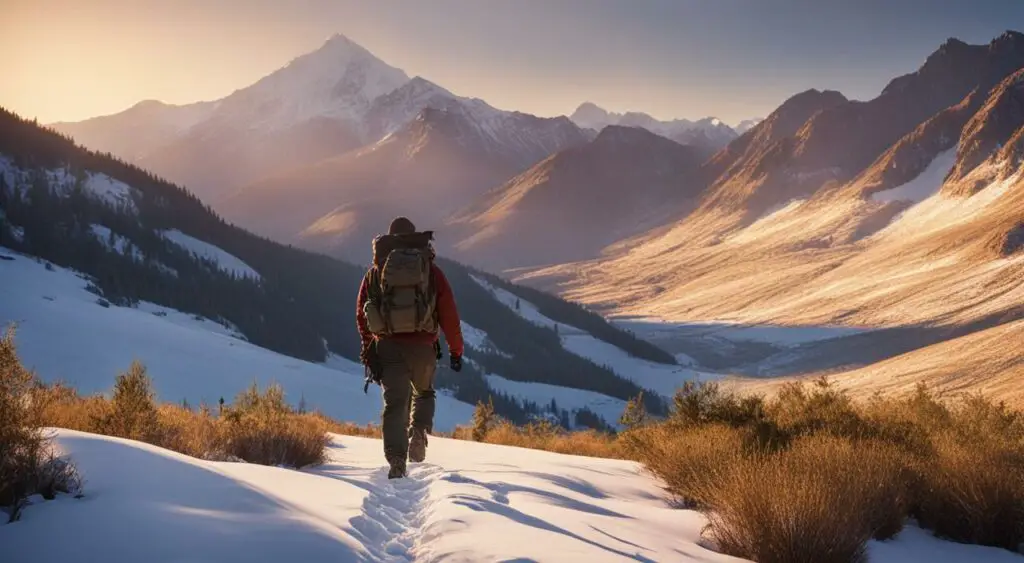
When embarking on a backpacking trip with a pistol, it’s essential to pack the right gear to ensure a safe and enjoyable experience.
Whether you’re a beginner or experienced backpacker, having the right equipment is crucial. Here’s a checklist of essential gear for backpacking with a pistol:
Backpacking Gear Checklists for Beginners
- Backpack (choose a pack that fits well and can carry all your gear)
- Tent or shelter (depending on the weather and environment)
- Sleeping bag and pad (for warmth and comfort)
- Cooking system (such as a stove, fuel, and cookware)
- Water filter or purification tablets
- Food (pack lightweight, high-energy options)
- Clothing (bring layers for warmth and protection)
- Flashlight or headlamp (with extra batteries)
- Navigation tools (such as a map and compass)
- First aid kit (including any necessary medications)
- Sunscreen and insect repellent
- Multi-tool or knife
- Emergency whistle
- Firestarter (such as matches or a lighter)
Gun While Backpacking Choosing
In addition to the standard backpacking gear, you’ll need to bring along gear specific to carrying a pistol. Here are a few items to consider:
- Quality holster (to safely carry your pistol)
- Extra ammunition (carry enough for your entire trip)
- Cleaning kit (to properly maintain your pistol on the trail)
- Gun case or lockable container (to store your pistol while sleeping or away from camp)
Backpacking Situations and Trips
Depending on the specific backpacking situations and trips you plan on taking, your gear needs may vary. Here are a few additional items to consider:
- Bear spray (for protection against bear encounters)
- Emergency communication device (such as a satellite phone or personal locator beacon)
- Cold weather gear (such as warm clothing and a four-season tent for winter trips)
- Daypack (for shorter hikes away from the main campsite)
By ensuring you have all the necessary gear for your backpacking with a pistol trip, you can increase your safety and enjoyment while on the trail.
Moderated Backpacking: Interacting with Other Hikers While Carrying a Pistol
Backpacking is a communal activity, and you’re likely to meet other hikers on the trail. While carrying a pistol is legal, it’s essential to interact with other hikers respectfully and safely.
There are some specific etiquettes for carrying a firearm while backpacking, and you should follow them to ensure a positive experience for both you and other hikers.
Join a Group
If you’re new to backpacking with a pistol, consider joining a group hike.
It’s an excellent opportunity to learn from experienced backpackers and get familiar with moderated backpacking etiquettes.
In addition, hiking with a group can be safer and more enjoyable.
Be Transparent
If you’re carrying a pistol, it’s essential to be transparent and honest about it when interacting with other hikers.
Avoid hiding your firearm or being secretive about it. Let other hikers know that you’re carrying a pistol and assure them that you’re a responsible gun owner.
Respect Other Hikers’ Comfort Level
Remember that not everyone is comfortable around firearms, and it’s essential to respect other hikers’ feelings.
If someone expresses concern about your pistol, be open to having a conversation about it and reassure them that you’re carrying it safely and correctly.
BPL Members and Carrying a Pistol
Backpacking Light (BPL) is a popular community among backpackers, and you may encounter BPL members on the trail.
The organization has specific guidelines for carrying a firearm while backpacking, and you should be aware of them.
According to BPL, you should avoid openly carrying your pistol and keep it concealed. Additionally, BPL suggests carrying non-lethal items such as bear spray as well.
Backpacking in Different Environments: Adapting Your Pistol Use
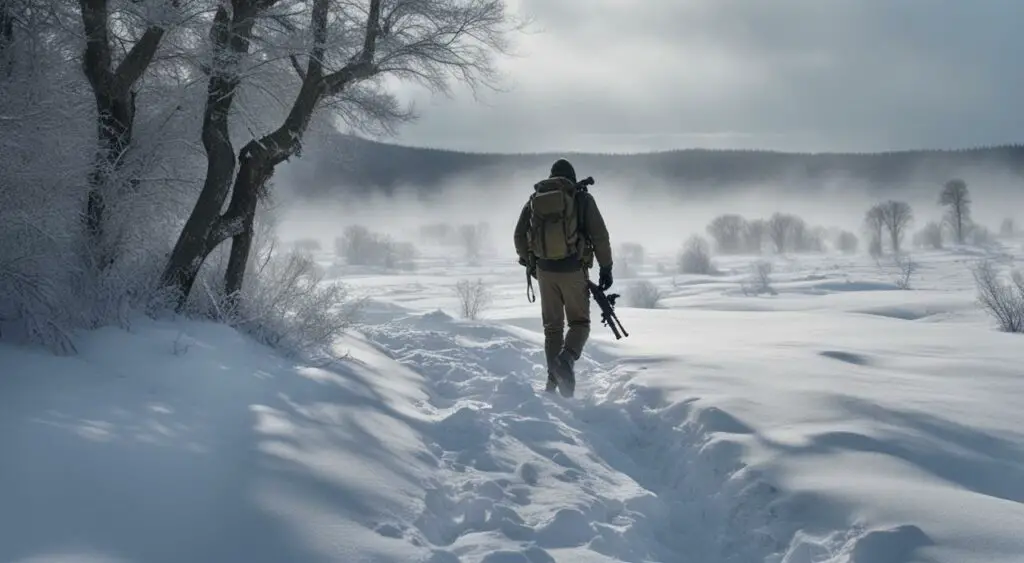
Backpacking is a thrilling activity that allows you to escape from the hustle and bustle of daily life and immerse yourself in nature.
However, depending on the season and specific backpacking situations, your approach to carrying and using a pistol may need to adapt.
Here are some things to keep in mind when backpacking in different environments:
Winter Trips
Winter backpacking trips can provide a unique and beautiful experience, but they also come with their own set of challenges.
When it comes to carrying a pistol, you may need to adjust your gear and technique.
You’ll want to have a holster that is compatible with bulky winter gear and consider using a pistol with a larger caliber for added stopping power in case of emergency.
Additionally, consider bringing along extra ammunition to account for the possibility of your firearm getting wet or dirty in snowy conditions.
Day Hikes
For shorter day hikes, you may not need to carry a pistol at all.
However, if you feel more comfortable having a firearm with you, consider using a smaller, lightweight gun that won’t weigh you down.
Keep in mind that you may encounter other hikers on the trail, so practice proper etiquette and be sure to conceal your firearm properly to avoid causing alarm.
Multi-Day Backpacking Adventures
For longer backpacking trips, you’ll want to ensure you have a pistol that is reliable and durable.
Choose a firearm with a caliber that is appropriate for the animals you may encounter in the area you’ll be backpacking in.
Consider using a holster that is comfortable for long-term wear, and bring along extra ammunition to be prepared for any situation that may arise.
Backpacking Trail
The type of backpacking trail you’ll be on can also impact how you carry and use your pistol.
If you’ll be on a well-traveled trail, you may want to be more discreet with your firearm to avoid alarming other hikers.
In more isolated areas, you may feel more comfortable carrying your firearm openly.
Be sure to research the specific trail you’ll be on to ensure you understand any rules or regulations regarding firearms.
Backpacking Trips
For backpacking trips of any length and in any environment, it’s important to prioritize safety and proper firearm use.
Consider taking a firearm safety course before embarking on your trip, and always practice proper gun handling techniques.
Additionally, be sure to pack other essential gear items, such as appropriate clothing, food, and water, to ensure a comfortable and successful backpacking experience.
Exploring Alternatives to Pistols for Backpacking
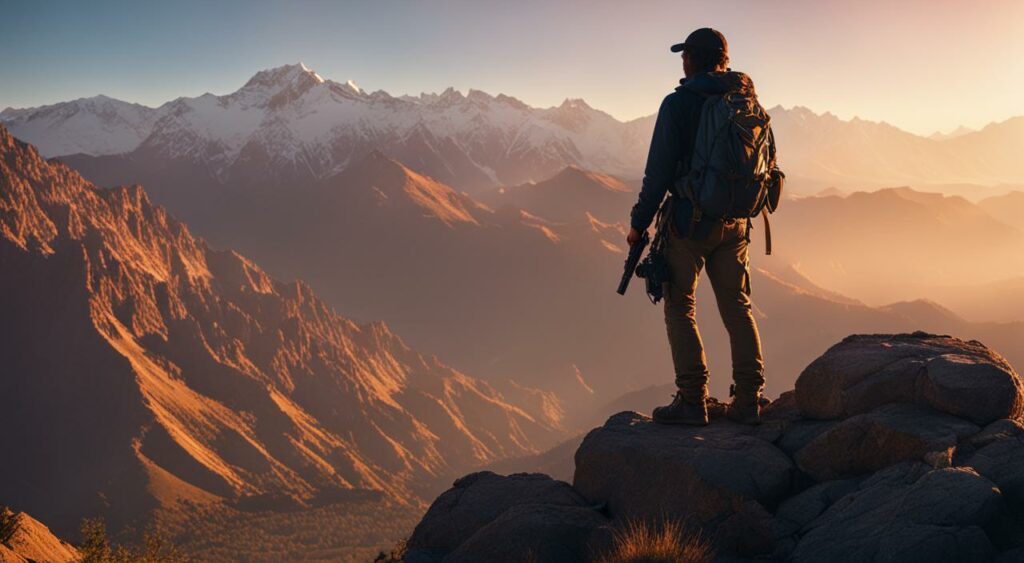
While carrying a pistol can provide added protection on your backpacking trip, there are alternative options to consider.
Bear spray, for example, is a popular choice among hikers and backpackers. It’s a non-lethal option that’s specifically designed to deter aggressive bears.
Bear spray comes in a canister and contains a potent spray that can temporarily blind and disorient a bear. It’s important to note that bear spray should only be used when necessary and as a last resort.
You should always prioritize safety and try to prevent encounters with bears by making plenty of noise and carrying bear bells when hiking in bear country.
Another alternative to pistols is non-lethal self-defense tools, such as stun guns, pepper spray, and personal alarms.
These tools can be effective in deterring threats and giving you time to escape to safety.
However, it’s important to research and understand the proper use and legalities of these tools before incorporating them into your backpacking gear.
| Pros | Cons |
|---|---|
| Bear spray is a non-lethal option that can deter bears without causing permanent harm. | Bear spray can be affected by wind and may not be effective in all situations. It can also be difficult to use in a sudden encounter with a bear. |
| Non-lethal self-defense tools can provide added protection without the legal and ethical implications of carrying a firearm. | These tools may not be as effective as a firearm and may require close proximity to the threat. |
Ultimately, the choice of whether to carry a pistol or an alternative tool on your backpacking trip is a personal one that should take into account your own comfort level, experience, and the specific risks of your trip.
Whichever option you choose, make sure to do your research, practice proper handling and safety techniques, and always prioritize safety on the trail.
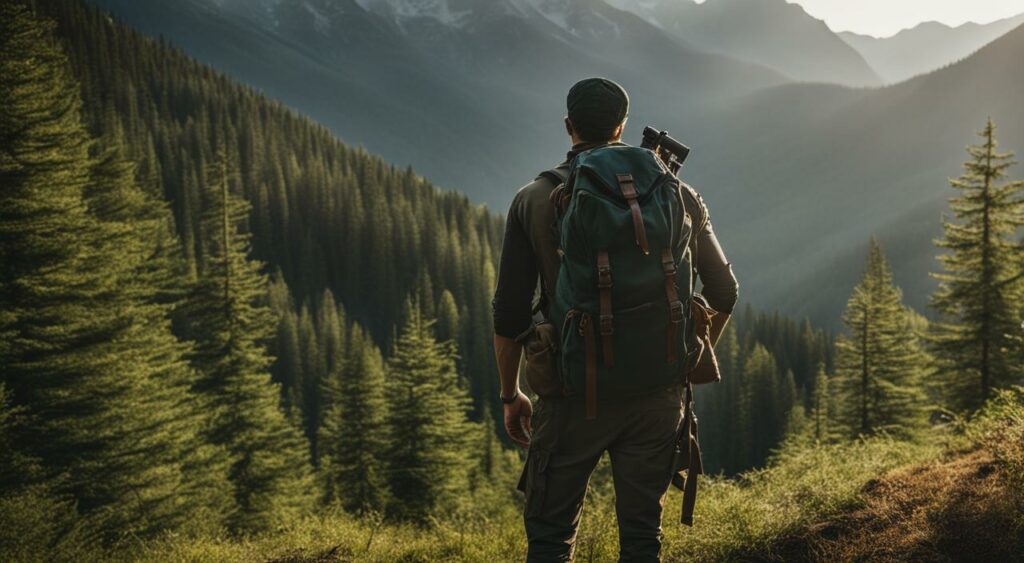
Conclusion
Backpacking with a pistol can be a great way to feel secure and protect yourself while on the trail. However, it’s crucial to prioritize safety, legal compliance, and responsible firearm use.
By selecting the right pistol for your needs, packing and carrying it properly, and following essential safety tips, you can have a great backpacking experience.
It’s also important to be aware of the legal aspects of carrying a firearm in different environments, such as national parks and on the Appalachian Trail.
Adapting your pistol use to different environments is also critical, as is knowing how to interact with other hikers while carrying a pistol.
While a pistol is a popular option, there are alternatives to consider, such as bear spray and non-lethal options, that can provide effective protection in specific backpacking scenarios.
Overall, the decision to backpack with a pistol is a personal one and depends on your individual needs and preferences.
With the right knowledge, preparation, and gear, you can have a successful and safe backpacking trip with a pistol.
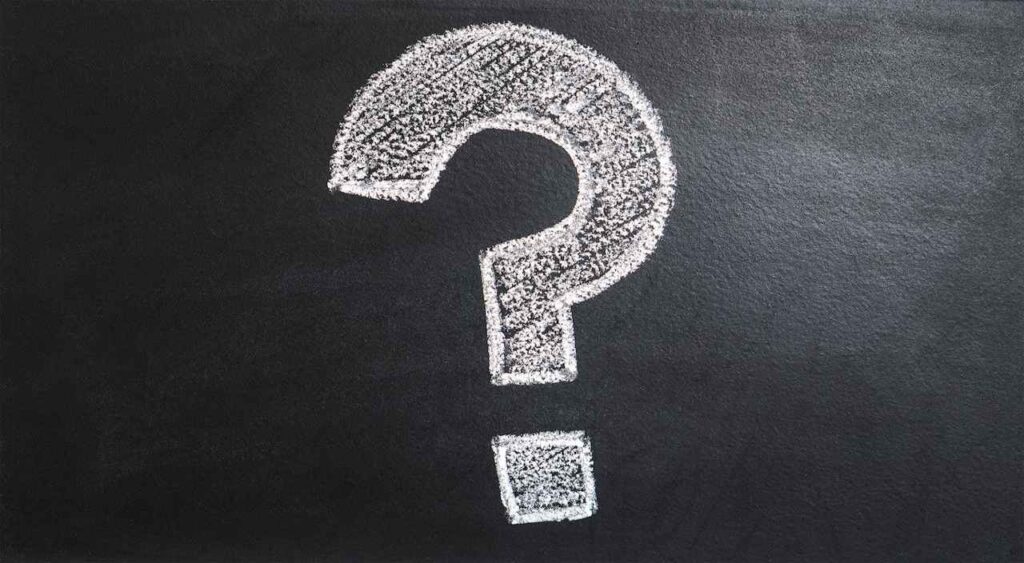
FAQ
-
Can I legally carry a pistol while backpacking?
It is important to understand the legal aspects of carrying a firearm while backpacking. Different areas, such as national parks and the Appalachian Trail, have their own regulations. It is crucial to research and comply with the specific laws in the areas you plan to visit.
-
How does carrying a pistol enhance my backpacking experience?
Carrying a pistol can provide added peace of mind and protection in certain situations. It can help you feel more secure in remote areas or when encountering wildlife. However, it is important to prioritize safety and responsible firearm use.
-
What are some safety tips for backpacking with a pistol?
Safety should always be a top priority when carrying a firearm while backpacking. Some essential safety tips include properly handling and storing your pistol, familiarizing yourself with the operation and maintenance of your firearm, and considering alternative options such as bear spray or concealed carry.
-
How do I choose the right pistol for backpacking?
When selecting a pistol for backpacking, factors such as weight, caliber, and reliability should be considered. Ultimately, the ideal backpacking gun will vary depending on your personal preferences and needs. It is recommended to seek guidance from knowledgeable professionals or firearm experts when making your decision.
-
How should I pack and carry my pistol on a backpacking trip?
Properly packing and carrying your pistol is crucial for convenience and safety. There are various techniques and holsters available that can help securely carry your firearm while on the trail. It is important to choose a method that allows for quick access but also keeps the pistol protected and out of the way.
-
What other gear should I consider when backpacking with a pistol?
Along with your pistol, there are other essential gear items to consider when backpacking. These can include appropriate clothing, navigation tools, first aid supplies, and camping equipment. It is important to create a comprehensive gear checklist tailored to your specific backpacking needs.
-
How should I interact with other hikers while carrying a pistol?
When backpacking with a pistol, it is important to be mindful of how you interact with other hikers. Always follow proper firearm etiquette, keep your pistol concealed and secured, and be respectful of others’ comfort levels. Maintaining a positive and safe environment is essential for everyone’s enjoyment and well-being.
-
How does the use of a pistol differ in different backpacking environments?
The use of a pistol may need to adapt depending on the environment and specific backpacking situations. For example, when backpacking in winter or encountering different wildlife, a different approach may be necessary. It is important to research and prepare for the specific challenges and requirements of each backpacking trip.
-
Are there alternatives to pistols for backpacking?
While pistols can be effective, there are alternative options for self-defense and protection while backpacking. Bear spray, for example, can be highly effective in warding off wildlife encounters. It is important to research and consider non-lethal options that may be suitable for specific backpacking scenarios.

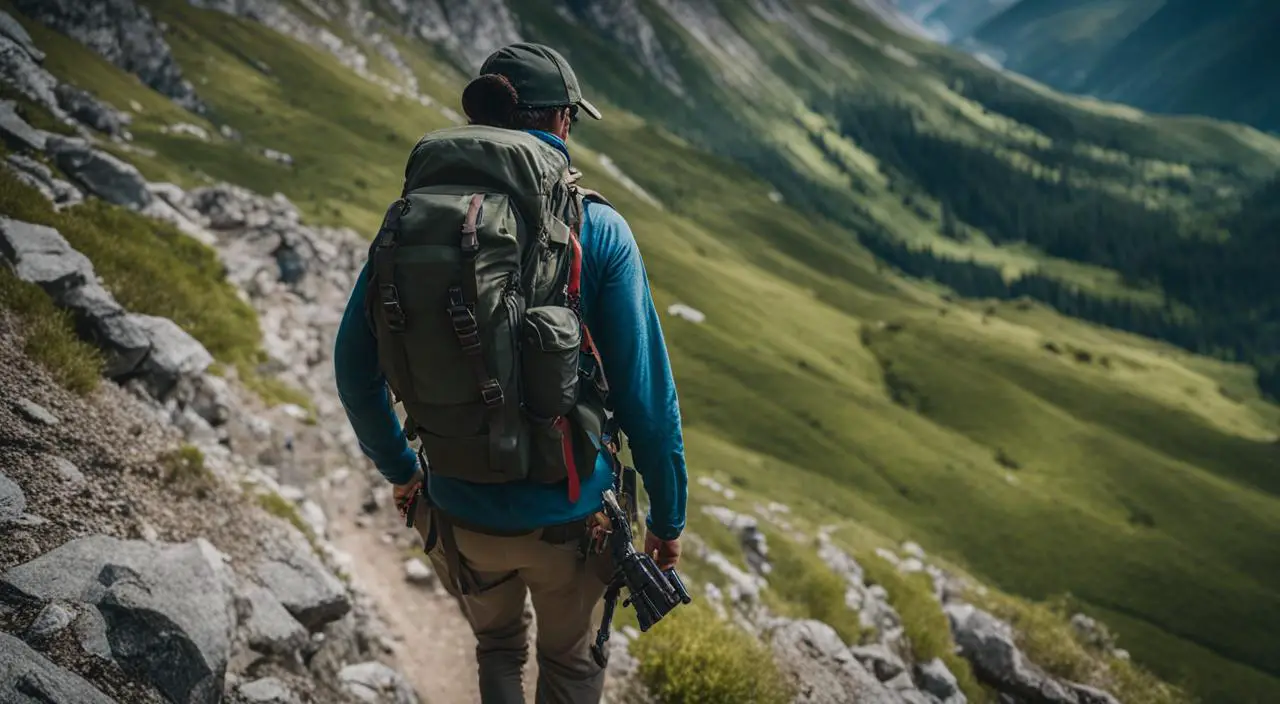

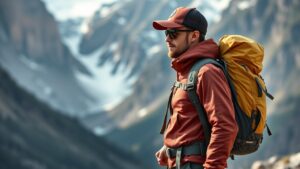
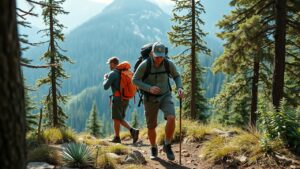
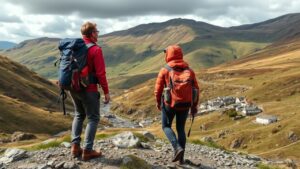

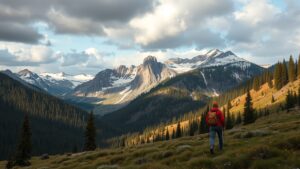

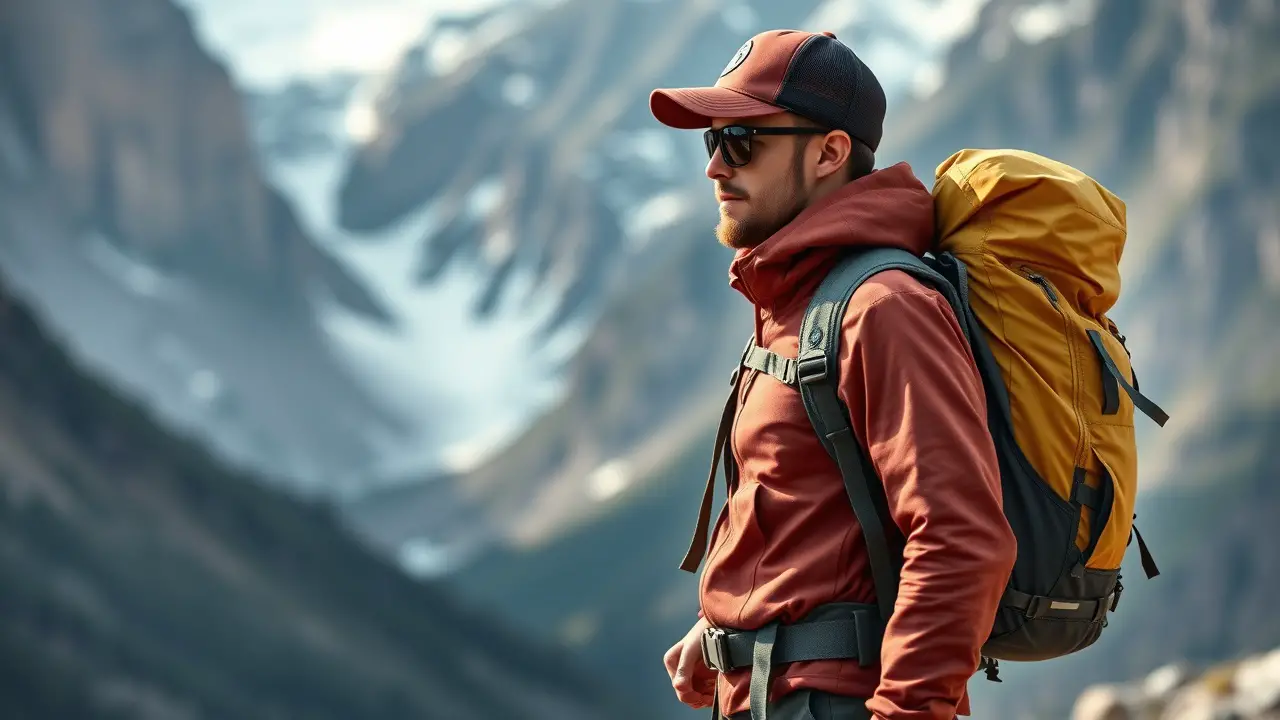
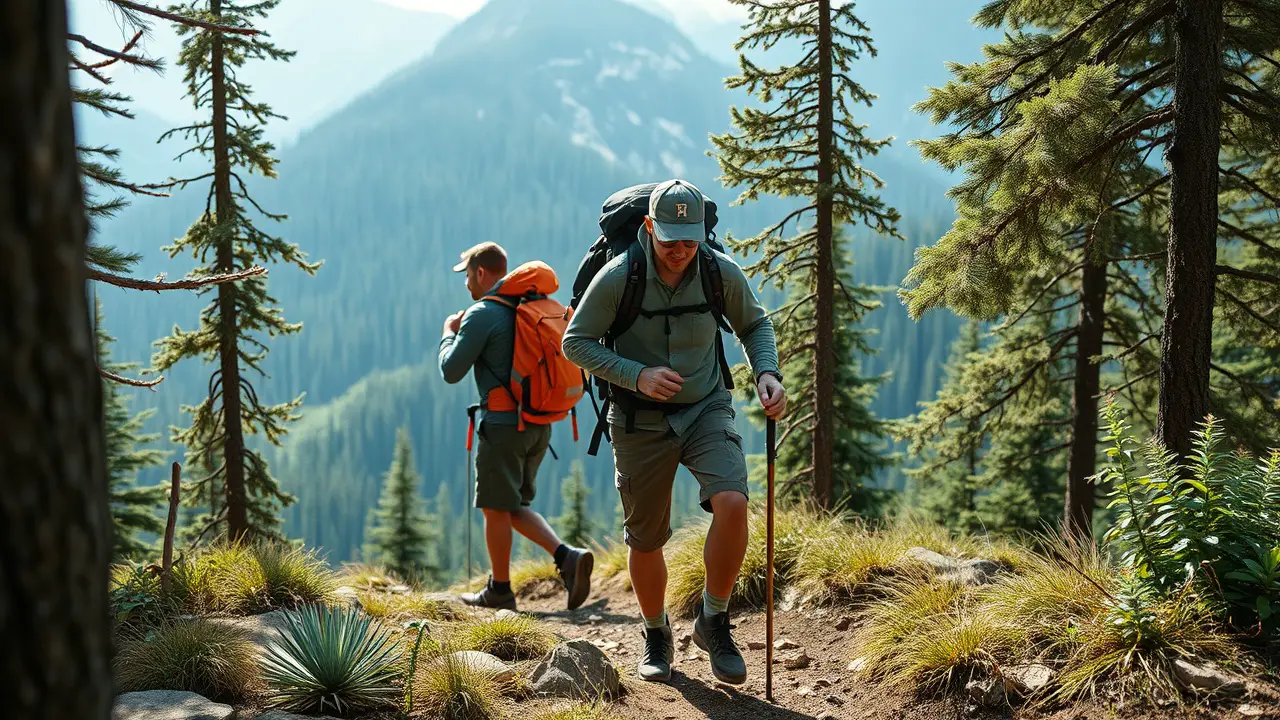
Leave a Reply